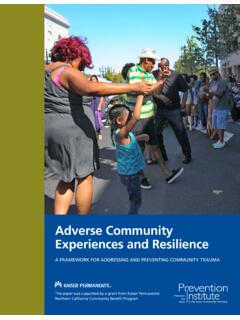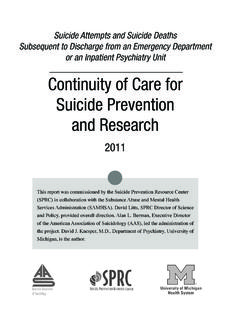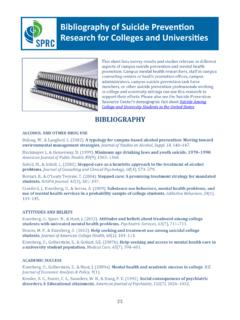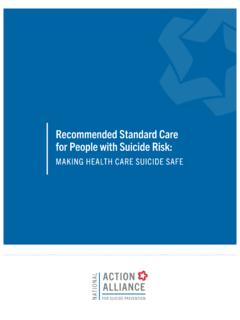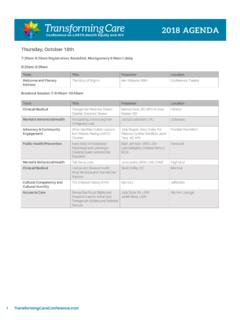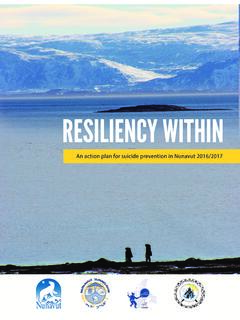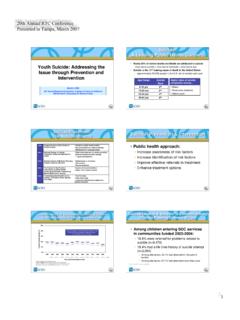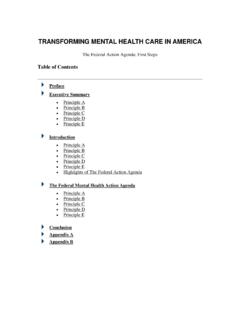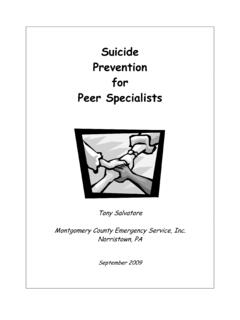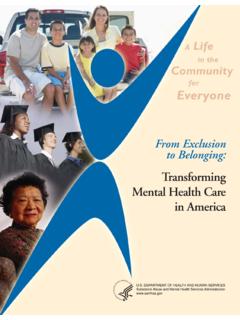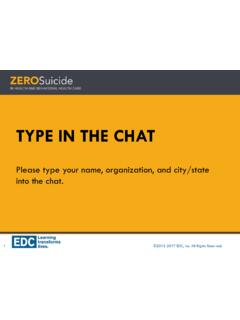Transcription of Transforming Communities to ... - Prevention Institute
1 Instituteat the center ofPutting Prevention community well-beingPrevention265 29th StreetOakland, CA Communities toPrevent Child Sexual Abuse andExploitation:A Primary Prevention ApproachThis document was prepared by Prevention Institute . Principal authors are:Annie Lyles, MSWL arry Cohen, MSWM argot Brown May 2009 This policy brief presents the distilled research and critical thinking of adiverse group of local and national experts in the field of child sexualabuse and Institute assembled this team and coordi-nated their efforts with the generous funding and support of the Ms. Foundationfor Women.* Via candid dialog and interviews, these leaders developed and prioritized primary Prevention strategies, analyzed environmental factors andnorms that perpetuate these problems, and outlined policies and practices fortransforming our Communities and our nation during these turbulent politicaland economic times.
2 This brief focuses especially on strategies that build onprevious successes within this field and hold the greatest promise for Transforming Communities and preventing child abuse and thank these leaders for their dedication to the field and for their thoughtfulinsights throughout this process. Likewise, we thank the Ms. Foundation forWomen for sponsoring this vital AlexanderExpert Consultant in Child MaltreatmentCDC, Division of Violence PreventionCordelia AndersonChairNational Coalition to Prevent Child Sexual ExploitationJetta BernierExecutive DirectorMassachusetts Citizens for ChildrenSuzanne Brown-McBrideExecutive DirectorCalifornia Coalition Against Sexual AssaultDeborah Donovan RiceExecutive DirectorStop It Now! National OfficePat EngVice President of ProgramsMs.
3 Foundation for WomenGena FitzgeraldExecutive DirectorJournalism Center for Children and FamiliesACKNOWLEDGMENTSP revention Institute is a nonprofit, national center dedicated to improving communityhealth and well-being by buildingmomentum for effective primaryprevention. Primary preventionmeans taking action to buildresilience and to prevent problemsbefore they occur. The Institute 'swork is characterized by a strongcommitment to community partici-pation and promotion of equitablehealth outcomes among all socialand economic groups. Since itsfounding in 1997, the organizationhas focused on injury and violenceprevention, traffic safety, health disparities, nutrition and physicalactivity, and youth Communities TO PREVENT CHILD SEXUAL ABUSEiPrevention InstituteiiTRANSFORMING Communities TO PREVENT CHILD SEXUAL HafnerDevelopment DirectorStop It Now!
4 National OfficeJeanine HaysProgram and Policy AssociateFamily Violence Prevention FundSara KershnarExecutive DirectorGenerationFIVEJean KilbourneSenior ScholarWellesley Centers for WomenDavid LeeDirector of Prevention ServicesCalifornia Coalition Against Sexual AssaultDiane LevinProfessor of EducationWheelock CollegeBrenna LynchProgram Associate, SafetyMs. Foundation for WomenLarry MagidTech Journalist & Internet Safety and CBS NewsPatrice PascualReporter/EditorJournalism Center for Children and FamiliesElizabeth SyProgram Coordinator/ Sexually Exploited Minor AdvocateBanteay Srei/Asian Health ServicesSally ThigpenState-wide CoordinatorStop It Now! Georgia * Prevention Institute materials are solely the responsibility of the authors and donot necessarily represent the official positions of the Ms.
5 Foundation for Abuse Before it Occurs: A Primary Prevention ApproachOver the last 30 years, advocates have worked hard to successfully educate usin child sexual abuse and its detrimental effects on children and and the general public alike have a greater understanding of the issue, andthis awareness has reached a tipping point over the last ten years, resulting in mobi-lized groups advocating for social and political solutions to abuse. So far, theresponse to these demands has largely focused on after-the-fact actions like incar-ceration and individual protection efforts such as Internet safety campaigns. Thenext step requires expanding the overarching dialog, moving from a focus on theindividual and after-the-fact efforts to an approach that can prevent child sexualabuse from ever happening.
6 A primary Prevention approach prevents abuse beforeit happens by addressing the environmental factors and societal norms that con-tribute to its occurrence in the first place. Leaders agree that the movement ispoised for a greater emphasis on primary Prevention , which honors and buildsupon past successes and complements the field s continued commitment toimproving responses to this critical issue. This shift will require an increased effortto advance promising primary Prevention approaches essential to achieving dra-matic reductions in rates of child sexual abuse and exploitation. A primary Prevention approach to child sexual abuse and exploitation promotessafe, healthy environments and behaviors, reducing the likelihood of abuse1in thefirst place.
7 This approach is often confused with early intervention services for vic-tims and perpetrators. Interventions, such as universal screening in health care set-tings, may help to alleviate trauma and potentially prevent future incidences; how-ever, early identification is subsequent to actual or threatened violence and seldomalters the broader community and societal environment that gave rise to the vio-lence. Primary Prevention moves far upstream to change the environmental fac-tors such as economic inequalities, sexism, media, and marketing practices thatTRANSFORMING Communities TO PREVENT CHILD SEXUAL ABUSE1 Prevention Institute I have a ten-year-old daughter and a five-year-old boy. I want the world mychildren grow up in to be one where my daughter can live free of violence and my son will be expected to treat all women with respect.
8 We need to invest at a level where we can create this future for our kids. Jim Hafner, Stop It Now! National OfficeWe must begin to shiftour focus from individualsto environments, fromfear to wellness, andbuild national momentumfor a balanced, targetedinvestment in quality Prevention norms and behaviors of an entire population. Primary Prevention of childsexual abuse and exploitation is a systemic process capable of dramatically reshap-ing our environment and norms. It is a crucial component of community success in preventing child sexual abuse depends on our ability to maintain acoordinated, comprehensive effort. research confirms that the issue is deeply root-ed in our environment and reinforced by our societal norms.
9 It touches everycommunity the latest data reports that one in four girls and one in seven boyswill be the victim of some type of sexual abuse/assault before age num-bers do not include the various ways children are sexually exploited through tech-nology, pornography, and other commercial sexual exploitation. Further, we knowthat victims of abuse are at an increased risk for alcoholism, depression, sexuallytransmitted infections, intimate partner violence, and suicide statis-tics provide an important challenge to our current norms and environments forchildren and adults: We must begin to shift our focus from individuals to environ-ments, from fear to wellness, and build national momentum for a balanced, target-ed investment in quality Prevention Prevention strategies counter environmental factors that support child sex-ual abuse and exploitation.
10 Examples of these environmental factors includeincreased marketing towards children and a pervasive media presence with drasti-cally high levels of sexualized messages and rigid gender roles. Root factors, suchas marginalization which increases the risks and decreases the resilience withinspecific Communities have not been widely acknowledged in policies and prac-tices addressing child sexual abuse and exploitation. As one leader said, Theremust be an increased awareness that child sexual abuse and exploitation does notoccur in isolation, but instead, stems from deeply rooted social inequities and envi-ronmental influences. These factors are relevant to all Communities , and we canfocus on them via comprehensive Prevention initiatives.

